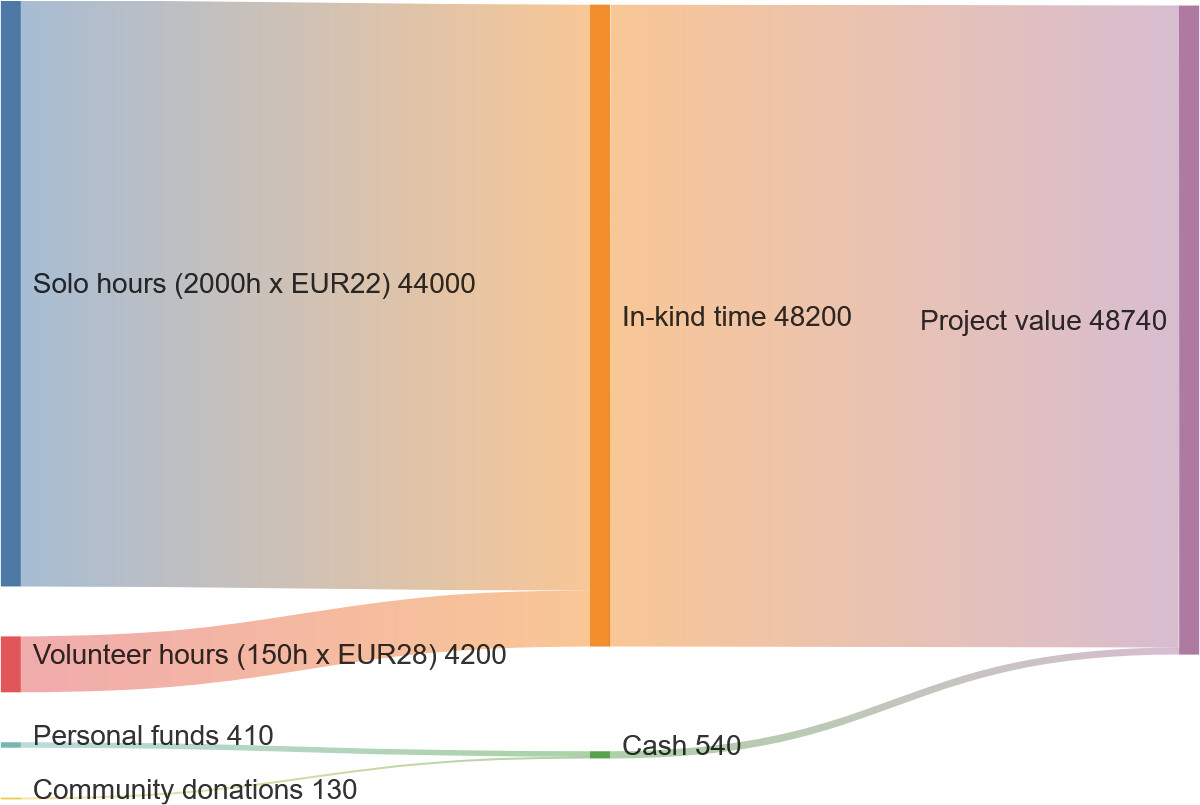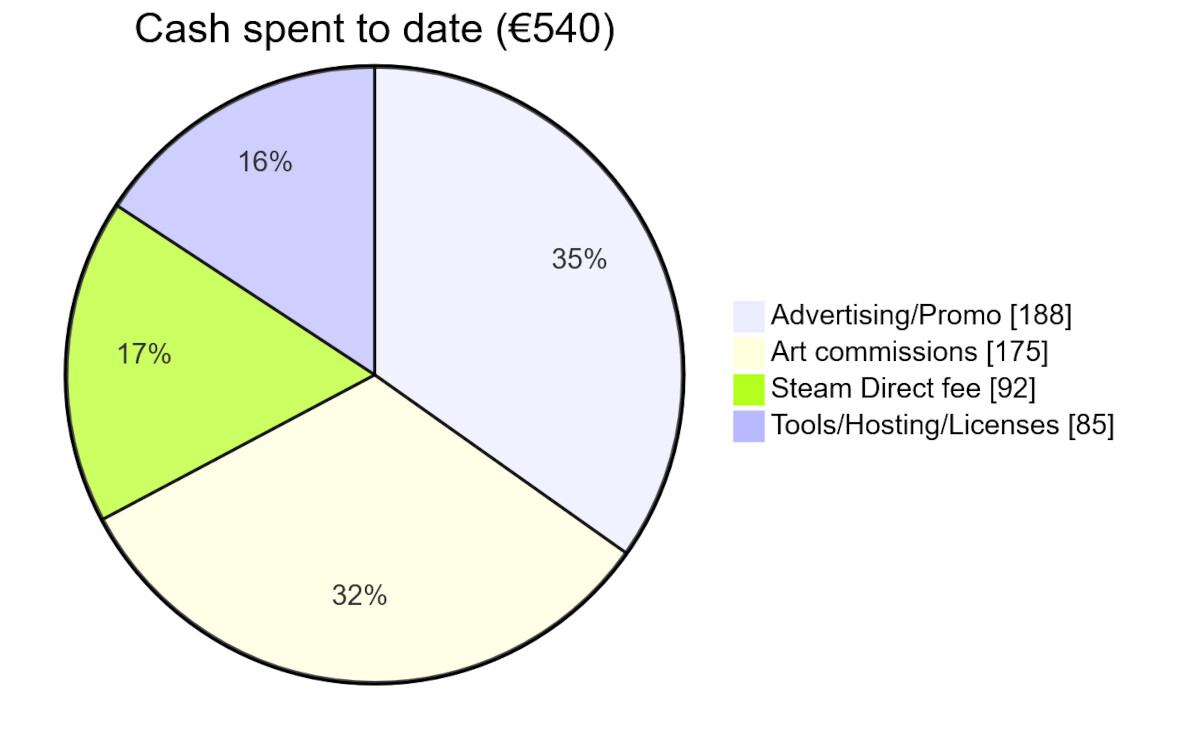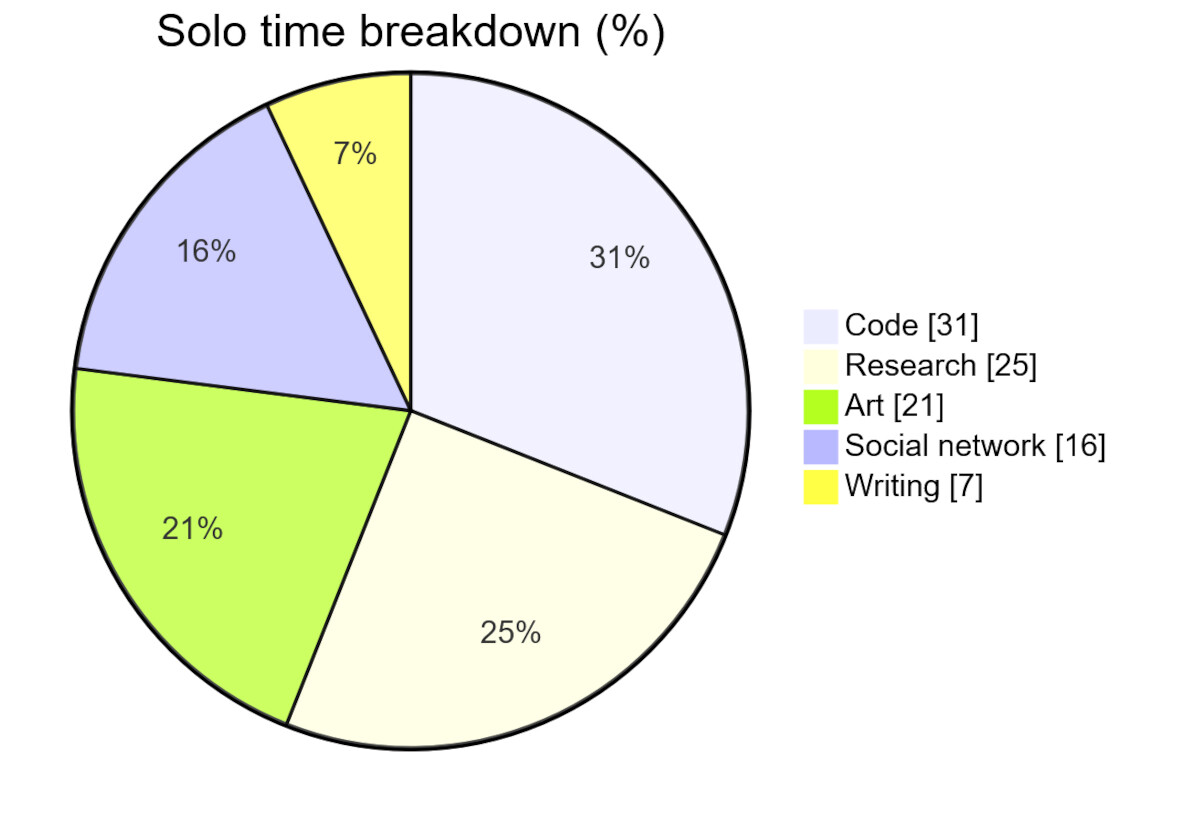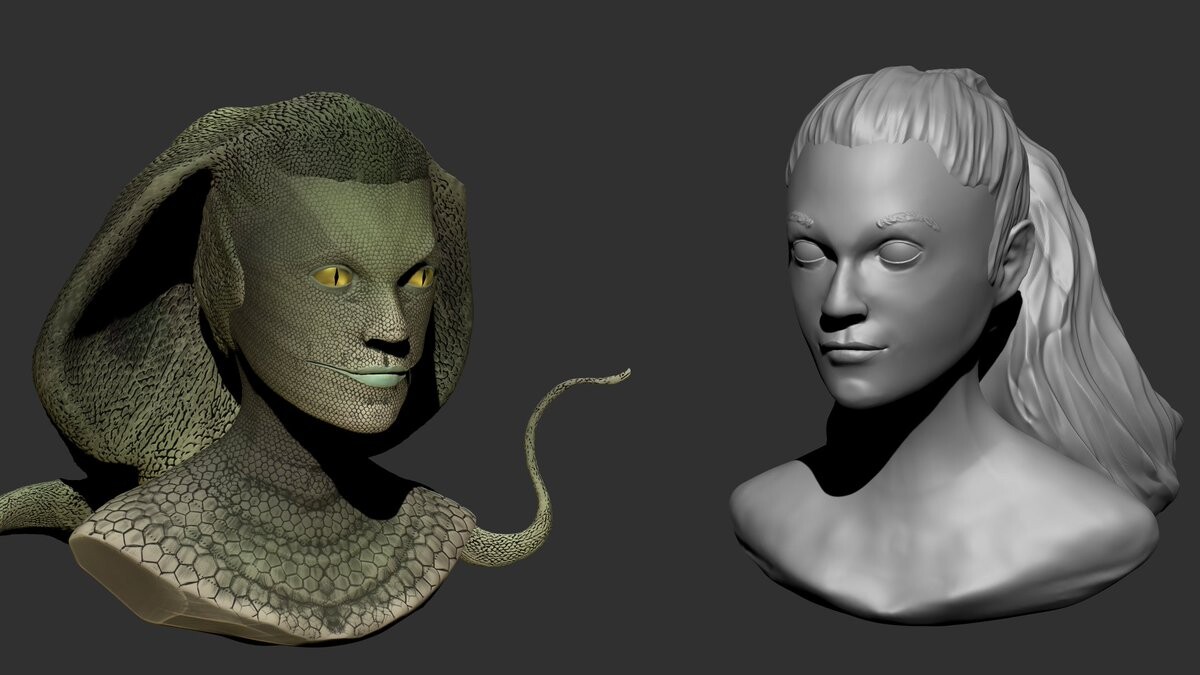Introduction
Organic forms play a significant role in artistic expression, used to depict natural shapes in various works of art. The process of conceptualizing and creating organic forms requires a deep understanding of natural shapes, proportions, and the use of different techniques and tools to create dynamic and convincing pieces.
This work focuses on the analysis and organization of organic forms using ZBrush to create digital sculptures. As described in [1], it’s important to adhere to natural shapes and proportions, using lines and textures to add depth and dimension to the artwork.
This blog will describe the process of creating sculptural solutions based on analyzed organic forms. It will explore the use of specific tools to achieve the final sculptural solution, as well as the methodologies for developing artwork, as outlined in [2].
Additionally, it will document my personal journey in creating sculptures in ZBrush based on various references. Through this process, I’ll evaluate solutions to artistic challenges in terms of form, character, and anatomy, while identifying potential alternatives or improvements to the artistic results.
[1] 3D Total Publishing (ed.) (2017) The Artist’s Guide to the Anatomy of the Human Head. Worcester, UK: 3D Total Publishing.
[2] P. & C. Faraut, „Portrait sculpting: anatomy & expressions in clay”, 1st ed., Honeoye, N.Y. : PCF Studios, 2004, ISBN-13: 978-0975506509.
1. Creating a Bust of an Elderly Man: Week I
This project focuses on the creation of primary, secondary, and initial tertiary forms for a male bust, using reference photos for guidance. The process begins with a basic sphere, from which we define the relationship between the volume and character of the shape, aiming to capture the likeness. By observing how light and shadow fall on the face in the reference photos, we establish the planes and volume.
1.1. Analysis and Interpretation of Organic Form
- The sculpture of the elderly man's head demonstrates a solid balance between volume and space, with minimal emphasis on facial details while focusing on the overall volume of the head.
- The surface of the sculpture is crafted with significant attention to planes and edges, contributing to the expressiveness and depth of the head’s appearance.
- The anatomical solution of the cheekbone lacks precision, making the perception of the head’s volume more challenging.
- Overall, the sculpture exhibits notable qualities in terms of planes and lighting, but more work is needed to refine the anatomical accuracy.
2. Creating a Bust of an Adult Woman: Week II
This project involves the creation of primary, secondary, and initial tertiary forms for a female bust, using reference photographs as a guide. The process begins with a basic sphere, from which we define the relationship between the volume and the character of the shape, aiming to achieve likeness. As in the previous project, we carefully observe how light and shadow interact with the face in the reference photos, allowing us to define the planes of the volume.
2.1. Analysis and Interpretation of Organic Form
- The head of the young woman is sculpted in a simple and symmetrical manner, conveying a sense of stability and calm. However, some shortcomings prevent this work from fully achieving a sense of rhythm.
- The relationship between volume and space is straightforward and direct. The head is defined by clear lines and shapes, giving the impression that the sculpture is primarily focused on form.
- The planes and edges are adequately precise, providing a technically sound appearance. However, the area around the eyes and forehead lacks definition, leaving the head of the woman somewhat vague and unclear. As a result, the character of the woman is not fully captured.
- Overall, the piece shows potential, but more work could be done to improve expression and precision.
This week’s focus was on refining symmetry and structure, but it also highlighted the importance of capturing expression through subtler forms, particularly around the eyes and forehead.
3. Creating a Bust of an Adult Man: Week III
This week’s project focuses on creating primary, secondary, and initial tertiary forms for a male bust using reference photographs. The process begins with a sphere, from which the relationship between volume and the character of the form is defined, aiming for likeness. By observing how light and shadow fall on the face in the reference photos, we determine the volume’s planes.
3.1. Analysis and Interpretation of Organic Form
- The sculpture of an adult man in middle age with a striking appearance creates a strong and expressive composition. The 3D render emphasizes these aspects.
- Although the sculpture is not entirely symmetrical, it creates a dynamic rhythm and good balance.
- The relationship between volume and space is clearly defined, with expressive facial contours and precise detailing. The planes and edges are well-articulated, with clearly defined contours and solid shaping.
- Despite some shortcomings, such as the soft and undefined shape of the neck, the bust manages to convey expression and character. Additionally, the shape of the cheeks is not entirely correct, and the facial expression doesn’t fully capture the person’s character.
- Overall, the sculpture represents an interesting and challenging work that requires further refinement.
This project emphasizes the importance of balancing symmetry with expressiveness, while identifying areas such as the neck and cheeks that need additional attention for better anatomical accuracy.
4. Creating a Bust of an Elderly Male: Week IV
This week’s work involves forming the primary, secondary, and initial tertiary shapes of an elderly male bust, based on reference photographs. Beginning with a sphere, we define the relationship between volume and form to achieve a likeness. Observing how light and shadow interact with the face in the reference photos, we establish the planes of the volume.
4.1. Analysis and Interpretation of Organic Form
- The sculpture represents an elderly male bust that captures specific features in the appearance. The 3D rendering highlights these characteristics.
- The composition is slightly asymmetrical, which adds to the sense of character.
- Rhythm is achieved through contrasting smooth and rough textures on the face. The volume is well-expressed, providing a clearer sense of depth and space, which creates the impression that the figure truly exists in three-dimensional space.
- The planes and edges are precisely defined, contributing to realism and making it easier to observe the details.
- However, the area around the eyes lacks a fully lifelike expression. Further study of the periorbital bone structure could enhance this aspect of the work.
This sculpture emphasizes the impact of asymmetry and textured contrast, along with the importance of detail precision around the eyes for a more lifelike expression.
5. Creating a Bust of a Young Male: Week V
This week's work focuses on forming the primary, secondary, and initial tertiary shapes of a young male bust, guided by reference photographs. Starting from a sphere, we define the relationship between volume and the character of the form to achieve similarity. Observing how light and shadow fall across the face in the reference images helps establish the planes of volume.
5.1. Analysis and Interpretation of Organic Form
- The sculpture represents a young male bust with a distinctive appearance; the nose is slightly indented, giving it a boxer-like look. This characteristic is emphasized in the 3D rendering.
- Rhythm is achieved through the contrast between smooth and rough textures on the face (such as the beard and mustache) and the interaction between the hair and face.
- The well-expressed facial volume enhances the sense of depth and space. While the head is anatomically accurate, the nose is exaggerated in volume to better convey character.
- The planes and edges lack precise definition, which detracts from a sense of realism. Additionally, the face's form is too soft, which does not effectively convey the person's character.
- Additional details, such as facial musculature or a more expressive eye area, could improve this aspect of the work.
This week’s sculpting emphasizes creating depth and character through texture contrast, though further refinement in facial structure and expression would enhance the overall realism.
6. Creating a Bust of a Young Adult Woman: Week VI
This phase of work focuses on crafting the primary, secondary, and initial tertiary forms of a young adult female bust, guided by reference photographs. Beginning with a sphere, the aim is to establish the relationship between volume and the form’s character, achieving resemblance. By studying how light and shadow fall on the face in the reference images, we define the planes of volume.
6.1. Analysis and Interpretation of Organic Form
- The sculpture represents the head of a young adult female (Images 27, 28, 29, 30) with an emphasis on balanced volume and spatial relationship, elegantly capturing the distinct facial features and clear contours of the head.
- The planes and edges are carefully defined, contributing to a realistic appearance and enhancing the expressiveness of the character.
- One noted shortcoming is the lack of liveliness in the gaze, which might be due to insufficient precision in defining the eye area, making it appear less expressive.
- Overall, the sculpture demonstrates significant qualities in terms of plane accuracy and lighting, yet further refinement in facial expression would enhance its impact.
This week’s focus was on achieving a harmonious balance in form and detailing, aiming for realism in structure. With more attention to expressiveness, especially around the eyes, the character’s liveliness could be further brought to life.
6.2. Transformation of the Organic Form
In this chapter, we explore the transformation of an adult female bust into an animalistic form. After defining the primary and secondary forms and giving the sculpture a portrait-like character (analyzed in Chapter 6.1), we attempt to create a creature that combines both snake and human elements. The main idea of this project is to retain the characteristics of the person while emphasizing the attributes of a snake. For this project to be successful, a balance must be achieved in expressing both characters; if one character dominates too strongly, the other will be overshadowed.
6.2.1 Analysis of the Transformed Form
- The composition of the sculpture is directed upward, with the female portrait transforming into a snake. Balance is achieved through the symmetrical arrangement of head elements, with the female portrait centered, and the snake features symmetrically distributed on each side.
- The volume of the female head is precisely defined, while the volume of the snake parts is less refined, suggesting outlines rather than full form. Space is utilized to create an illusion of depth and dynamism, using shadow and perspective.
- In summary, this sculpture successfully balances the characteristics of both the adult female and the snake. This is achieved through the precisely defined forms and volumes of the female head and body, while suggesting the contours of the snake. For an even stronger effect, further refinement of the snake’s volumes and forms would enhance the overall impact.
7. Creating a Self-Portrait Bust
The process involves sculpting the primary, secondary, and the beginnings of tertiary forms of a self-portrait bust based on reference photographs. We start by shaping the basic sphere and then define the relationship between volume and form to achieve likeness. By observing how light and shadow fall on the face in the reference photos, we define the planes of the volume.
7.1. Analysis and Interpretation of the Organic Form
- The self-portrait is a sculpture of an adult male figure (Figures 36, 37, 38, 39). [9] – A 3D representation.
- The composition of the work is independent and informal, which conveys a sense of freedom and creativity in the use of space. The relationship between volume and space is focused on the expressiveness of the face, with emphasis on features such as the eyebrows, nose, and lips.
- The planes and edges are sharply defined, contributing to the realism and vibrancy of the head's appearance.
- However, a shortcoming is that the eyes are not sufficiently detailed, which makes it harder to perceive the emotions and facial expressions.
- Overall, the self-portrait is a successful piece in terms of planes, light, and anatomy, with a minor flaw in the rendering of the eyes.














































